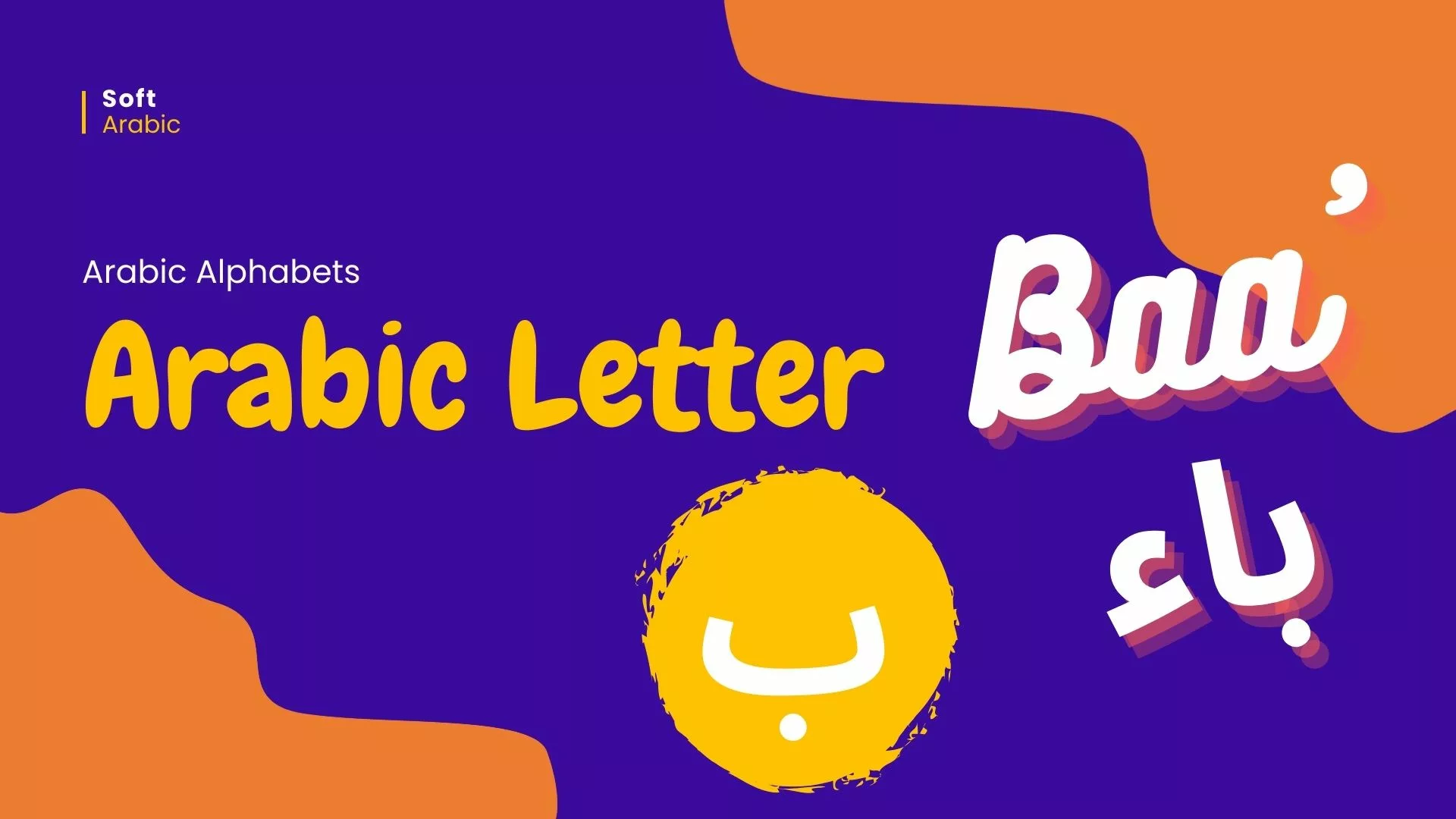Introduction
Welcome to the intriguing world of the letter “B” in the Arabic alphabet. In this comprehensive guide, we delve into the depths of the Arabic letter ‘ب’ (bāʾ)., exploring its pronunciation, unique sounds, and fascinating trivia. Join us on a journey to unravel the mysteries behind the second letter of the Arabic alphabet “abjad”.
Table Of Contents
The Basics of Arabic Letter ‘ب’ (Baa)
In the Arabic script, ‘ب’ (ba) is the second letter of the alphabet. It is a consonant, representing a distinct sound in the Arabic language. Mastering the correct pronunciation of ‘ب’ is essential for anyone learning Arabic, as it forms the foundation of various words and expressions.
The different forms of the letter ‘ب’ (Baa)
The letter takes different forms based on its position in a word: initial, medial, final, or isolated.
| Contextual forms | Arabic Name | English Name | Translit. | |||
|---|---|---|---|---|---|---|
| Isolated | End | Middle | Beginning | |||
| ﺏ | ـب | ـبـ | بـ | باء | b | bāʾ |
🧡 Unlock the art and significance of each letter by visiting this enlightening link
The letter ‘ب’ (Baa) with Diacritics (Short Vowels) Fathah, Dammah, Kasrah and Sukūn
The diacritics known as Fathah, Dammah, Kasrah, and Sukūn, collectively referred to as “harakat,” play a crucial role in Arabic script. Fathah, depicted by a slanting line above a letter, signifies a short “a” sound. Dammah, represented by a small round shape above a letter, indicates a short “u” sound. Kasrah, symbolized by a slanting line below a letter, denotes a short “i” sound. Sukūn, portrayed by a small circle above a letter, signifies the absence of a vowel sound. These harakat enhance the clarity of pronunciation and contribute to the nuanced articulation of Arabic words, facilitating accurate communication in both written and spoken forms.
| Short Vowel Sukūn | Short Vowel Kasrah | Short Vowel Dammah | Short Vowel Fathah |
|---|---|---|---|
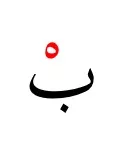 |  |  |  |
| اشْتَرَيْتُ خُبْزًا طَازَجًا مِنَ الْمَخْبَزَةِ | أَكَلَ أَحْمَدُ حَتَّى شَبِعَ | .يَلْعَبٌ الوَلَد كُرَة القَدَم كُلَّ مَسَاء | .كَتَبَت قَصِيدَةً جَمِيلَةً |
| Ishtarayt khubzan tazajan min al-makhabazati. | Akala Ahmad hatta shabi’a. | Yal’abo al-walado kurat al-qadam kulla masa. | Katabat qaseedatan jameelatan. |
| I bought fresh bread from the bakery. | Ahmad, ate until he was full | The boy plays soccer every afternoon | She wrote a beautiful poem. |
📚 Explore the enchanting way these vowels adorn each letter of the Arabic alphabet :
- Arabic Letters with Short Vowel Fathah
- Arabic Letters with Short Vowel Dammah
- Arabic Letters with Short Vowel Kasrah
The letter ‘ب’ (Baa) with Diacritics (Short Vowel) Tanwīn
Tanwīn is a diacritic in Arabic script that represents short vowels. It consists of three dots written above the final consonant of a word, indicating a nasalized sound. Tanwīn plays a crucial role in guiding pronunciation and conveying specific grammatical meanings. This diacritic enhances the phonetic precision of Arabic, contributing to the language’s richness and ensuring accurate articulation in both written and spoken contexts.
| Letter Baa with Tanwīn Kasrah | Letter Baa with Tanwīn Dammah | Letter Baa with Tanwīn Fathah |
|---|---|---|
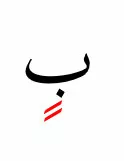 | 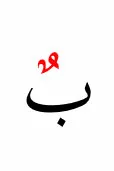 | 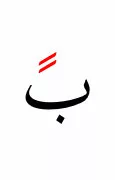 |
| شَرِبْتُ ثَلاثَ عُلْبٍ مِنَ الصُّودَا | لَدَيْهَا قَلْبٌ طَيِّبٌ | قرأت كتابًا |
| Sharibtu thalāthat ʿulbin mina as-sūdā. | Ladayha qalbon tayyibon. | Qarat kitaban |
| I drank three soda cans. | She has a kind heart. | She read a book. |
The letter ‘ب’ (Baa) with Diacritic (Short Vowel) Shadda
The diacritic known as Shadda holds a significant role in the Arabic script. Represented by a doubling mark sukun followed by Fathah, Shadda indicates the emphasis or doubling of a consonant sound in pronunciation. This diacritic not only refines the articulation of individual letters but also contributes to the clarity and precision of words in Arabic, enhancing both written and spoken communication. Shadda’s role lies in adding emphasis and depth to the phonetic expression, making it an integral component of the linguistic nuances within the Arabic language.
| Letter Baa with Shadda and Kasrah | Letter Baa with Shadda and Dammah | Letter Baa with Shadda and Fathah |
|---|---|---|
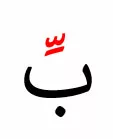 | 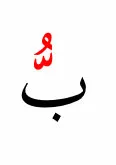 | 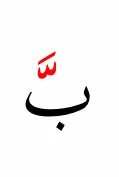 |
| ضَبَطْتُ المَنبّهَ عَلَى السَّابِعَةِ صَبَاحًا | أَنَا أُحِبُّ قَضَاءَ الْوَقْتِ فِي الطَّبِيعَةِ | وَجَدَ هاتِفَهُ مَخْبَّأً تَحْتَ الأَرِيكَةِ |
| Ḍabbaṭt al-manbbiḥ ‘ala as-sabi’aḥa ṣabāḥan | Ana uhibu qada’ al-waqt fi at-tabi’a. | Wajada hatifahu mokhba’ taht al-arika. |
| I set the alarm at 7 in the morning | I love spending time in nature. | He found his phone hidden under the sofa |
The letter ‘ب’ (Baa) with Diacritic (Short Vowel) Tanwīn with Shadda
Tanwīn, the diacritic representing short vowels, adds nuance by indicating the presence of an additional nasalized sound. When coupled with Shadda, a diacritic denoted by a doubling mark, the combination enhances the complexity of pronunciation. Together, Tanwīn with Shadda refines the phonetic subtleties of Arabic, contributing to the language’s precision and depth.
| Letter Baa with Tanwīn with Shadda and Kasrah | Letter Baa with Tanwīn with Shadda and Dammah | Letter Baa with Tanwīn with Shadda and Fathah |
|---|---|---|
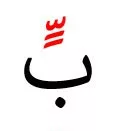 | 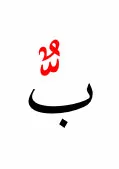 | 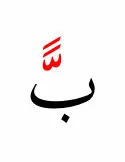 |
| …برع العرب في مجالات عدة من طبٍّ وهندسة | هذا دبٌّ | أحب أمي حباًّ صادق |
| Bara’a al-‘Arab fi mujalatin ‘ida min ṭibbin wa handasatin. | Hadha dobbon | uhibu ummi hubban sadiqan. |
| The Arabs excelled in various fields, including medicine and engineering. | This is a bear | I love my mother a true love. |
The letter ‘ب’ (Baa) with long Vowels
In Arabic, Alif (ا), Waw (و), and Yaa (ي), as long vowels, impart rhythmic beauty. Alif brings grace, Waw adds resonance, and Yaa contributes elegance to the language. Together, they play a harmonious role in shaping the lyrical and phonetic nuances that make Arabic a language rich in both tradition and poetic expression.
| Letter Baa with Long Vowel Yaa | Letter Baa with Long Vowel Wāw | Letter Baa with Long Vowel Alif |
|---|---|---|
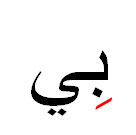 |  |  |
| وجدت كتابِي على الرف | وقفنا في طابٌور طويل لشراء تذاكر الحفل | طهيت طبقًا لذيذًا بالبَاذنجان |
| Wajadtu kitābī ‘ala al-raf. | Waqafna fi ṭābūr ṭawīl li-shirā’ tazākir al-ḥafl | Ṭaḥītu ṭabqan lazīẓan bi al-bāḏinjān. |
| I found my book on the shelf. | We stood in a long queue for the concert tickets | I cooked a delicious dish with eggplant |
You want to 🔍 Explore the fascinating world of all Arabic letters with long vowels!
The Melodic ‘ب’ Sound
The sound of ‘ب’ is a blend between ‘b’ as in “bat” and ‘p’ as in “pat.” It is a voiced bilabial stop, produced by closing both lips and then releasing them to create the sound. The pronunciation of ‘ب’ is vital in Arabic, as it distinguishes between different words and conveys specific meanings.
| Contextual Form | Isolated | End | Middle | Beginning |
|---|---|---|---|---|
| Arabic | سَحَابٌ | كِتَابٌ | تِبْنٌ | بَيْتٌ |
| English Transliteration | sahābun | kitābun | tibnun | baytun |
| English Translation | clouds | book | straw | house |
| Image |  |  |  |  |
The Art of Calligraphy: ‘ب’ in Arabic Script
Arabic calligraphy, an ancient art form, beautifully showcases the letter ‘ب’ in various styles. From traditional Naskh to ornate Diwani scripts, the elegant curves and strokes of ‘ب’ add aesthetic appeal to Arabic manuscripts, inscriptions, and artworks. Calligraphers often celebrate the graceful forms of ‘ب’ in their creative expressions.
Beyond the Basics: The Uses of ‘ب’
Beyond its linguistic significance, the letter “B” has diverse roles:
- Prefixes and Prepositions: (Harf al-jar) حرف الجر The letter “ب” serves as a prefix in Arabic to indicate various prepositions and meanings. For example:
- بِـ (bi-): This prefix is utilized to indicate “with” or “by means of.” For instance, I wrote with the pen (katabtu bialqalam.) كتبت بالقلم,” and (Aqsama billah.) أقسم بالله means “I swear to god.” we will reserve another post for preposition with The letter “ب” employed as a prefix
- Nouns and Adjectives: The letter “ب” can be part of various nouns and adjectives in Arabic. For example:
- بَحْرٌ (bahrun): Means “sea.”
- بَنَاءٌ (banna’un): Means “builder” or “architect.”
- Numerals: The letter “ب” operates as a numerical symbol to represent the number 2 in Arabic numerals.
Conclusion:
In conclusion, the Arabic letter ‘ب’ (ba) is not merely a symbol in the alphabet; it embodies the rich heritage, linguistic beauty, and artistic creativity of the Arabic language. Whether written in exquisite calligraphy, pronounced with precision, or celebrated in cultural contexts, ‘ب’ continues to captivate hearts and minds across the Arab world and beyond.
Embark on this enlightening journey and explore the wonders of the Arabic letter ‘ب.’ Embrace its sounds, appreciate its forms, and recognize its enduring impact on language and culture. Discover the essence of ‘ب,’ where art, history, and language converge in a harmonious blend of expression.
Frequently Asked Questions
Q1: What is the Arabic letter “ب” (ba)?
A: The Arabic letter “ب” is the second letter of the Arabic alphabet. It represents the sound “b” as in بيت (bayt) “book” in English.
Q2: How do we pronounce the letter “ب” in Arabic?
A: The letter “ب” is pronounced as a voiced bilabial stop, similar to the English sound “b” in words like “bat” or “book.”
Q3: What are some common words that start with the letter “ب”?
A: Common Arabic words that start with “ب” include بيت (bayt) meaning “house,” باب (bab) meaning “door,” and بنت (bint) meaning “girl.”
Q4: Can the letter “ب” be connected to other letters in Arabic writing?
A: Yes, the letter “ب” can be connected to the letters before and after it in Arabic script, allowing it to form words seamlessly.
Q5: Is the letter “ب” used in numbers in Arabic?
A: Yes, the Arabic letter “ب” represents the number 2 in Arabic numerals
Q6: Are there different forms of the letter “ب” in Arabic?
A: Yes, like all Arabic letters, “ب” has different forms: isolated, beginning, middle, and end forms, depending on its position within a word.
Q7: Can you provide examples of words where the letter “ب” appears in different positions?
A: Certainly! In isolated form: كِتَابٌ (kitābun, meaning “book”). In beginning form: بَيْتٌ (baytun, meaning “house”) . In middle form: حبرٌ (hibrun, meaning “ink”). In end form: سَحَابٌ (sahābun, meaning “clouds”).
Q8: How is the letter “ب” used in Arabic calligraphy?
A: In Arabic calligraphy, the letter “ب” is creatively stylized in various ways, showcasing the artistic diversity of the script.
Q9: Are there any famous words or phrases starting with the letter “ب”?
A: Yes, one example is بِسْمِ اللهِ الرَّحْمٰنِ الرَّحِيْمِ (Bismillah al-Rahman al-Rahim), meaning “In the name of Allah, the Most Gracious, the Most Merciful,” a common Islamic phrase.
Q10: How can I learn to write and pronounce the letter “ب” correctly?
A: To learn to write and pronounce the letter “ب” correctly, it’s helpful to use reputable language learning resources, practice with native speakers, and listen to correct pronunciations in authentic Arabic audio materials like our free online resources on learning Arabic on softArabic.com
